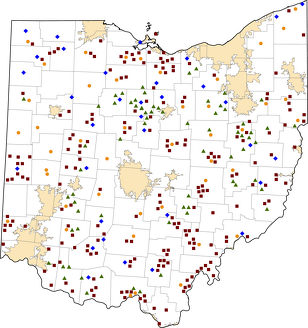Ohio
State Office of Rural Health
Ohio State Office of Rural Health
Email: PCRH@odh.ohio.gov
view details
Ohio Nonmetro Population
11,780,046
Estimated population
2,127,890
(18.1%)
People living in nonmetro areas
Ohio Rural Healthcare Facilities
33
Critical Access Hospitals
0
Rural Emergency Hospitals
70
Rural Health Clinics
206
Federally Qualified Health Centers*
44
Short Term/PPS Hospitals*
*Sites according to data.HRSA.gov (July 2025), showing only locations outside of
U.S. Census
Bureau Urban Areas with a population of 50,000 or more
Last Updated: 9/11/2025
Last Reviewed: 10/31/2025



Selected Social Determinants of Health for Rural Ohio